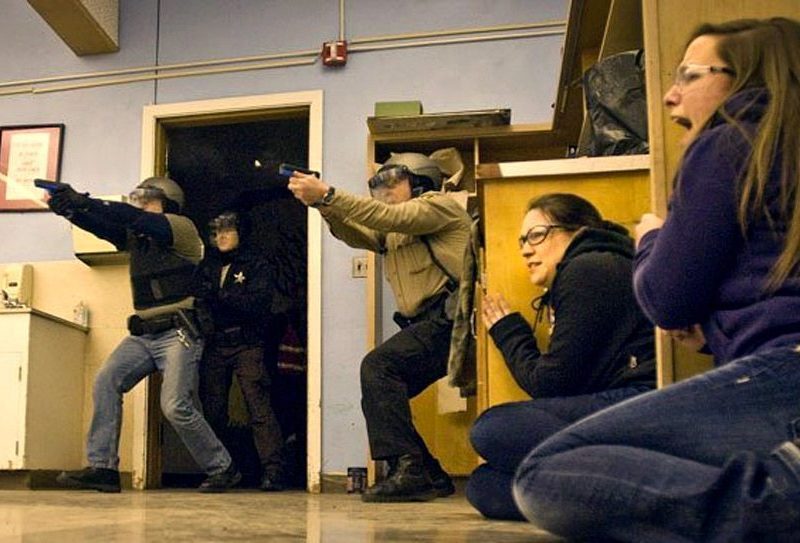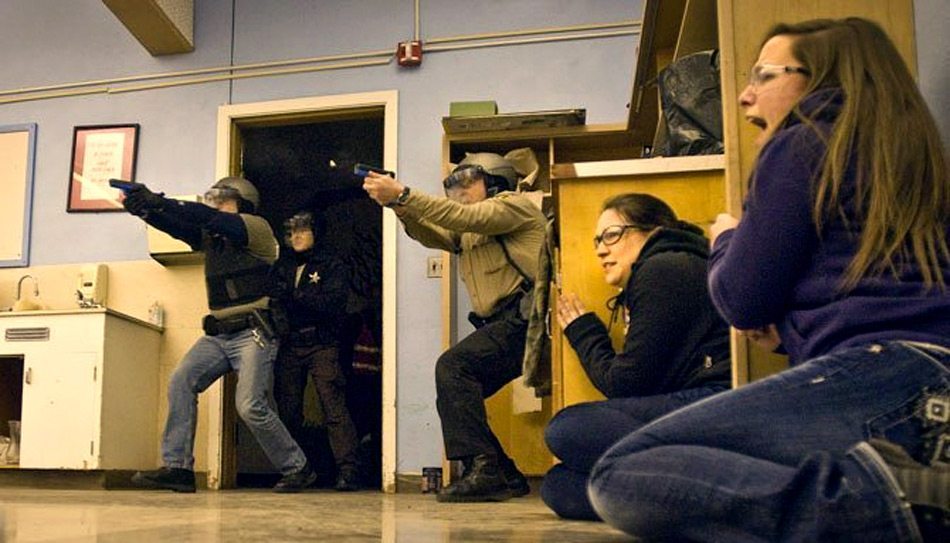FEMA defines an active shooter as “an individual actively engaged in killing or attempting to kill people in a confined and populated area. In most cases, active shooters use firearms and there is no pattern or method to their selection of victims. Active shooter situations are unpredictable and evolve quickly.”
To counteract the unpredictably of an active shooter situation, many organizations have implemented active shooter training for their employees. FEMA even offers a course on their website for those not affiliated with an organization but that still want to prepare for an active shooter situation. If you can’t prevent them or predict them, many people feel much safer knowing they won’t be at a loss if one does occur.
But, like any situation, there are multiple sides and factors when it comes to training for a dangerous incident like an active shooter. There are good traits and bad traits but they key is finding a happy medium between the two.
The Good
The good news about active shooter training is that it’s come a long way. Many may be more familiar with the term, “lockdown.” When schools and organizations first became aware that the probability of a dangerous situation was growing, they began practicing for a “lockdown situation.” The point of this procedure was to barricade yourself and others inside your current room, protecting yourself from the threat and preventing entrance into the room.
For example, teachers were encouraged, at the first sign of an intruder to immediately push all the chairs and tables in a room against the door, keeping students in and, hopefully, the shooter out. But, while methods for locking and barricading a door have come a long way, so has the emergency procedure. While locking down is still a viable option in many situations, many trainings are encouraging participants to consider Fight or Flight as an option before locking down.
Fighting Back
In new training scenarios, evacuation is now encouraged over locking down and fighting back is preferred over hiding. Students and employees are now being taught to be prepared to escape if possible or, as a last resort, fight back against the shooter. Fighting back can include throwing things at the shooter to distract them or swarming them as a group. This technique is being encouraged due to past successes by police and civilians distracting shooters and often overpowering them. Many feel that asking students to hide and await their fate is too passive of an approach.
Also, once police are alerted, it can take some time for them to arrive and precious seconds can be wasted. This is when, if presented with the opportunity, civilians are encouraged to take matters into their own hands and take down the shooter (if they can do so safely). Many argue that the simple act of doing something besides hiding will confuse the shooter and give someone the chance to overpower them. The shooter will be forced to go on guard and defend himself rather than focus on harming others.
This though, is where this new theory has met with concern.
The Bad
The Right Kind of Training?
While there have been situations where a shooter has been taken down by civilians and additional lives have been spared, there have also been situations where the opposite is true. When taking drastic action is concerned, many are questioning whether it’s fair to expect so much from civilians that have suddenly found themselves in a life or death situation. School officials are particularly concerned about this approach, asking if students are really ready for this kind of responsibility and if they will be able to retain any training during a highly stressful situation.
This is also a valid concern for adults and those not in a school environment. Civilians are not police officers. They can be taught techniques and rules but have not been trained to keep their cool in life or death situations therefore often making them just as unpredictable as the shooter.
The Right Concern?
While schools and other organizations are spending numerous hours and resources training for active shooter situations some, like Safe Havens International, are concerned that too much emphasis is being put on training for these situations given that they can be relatively uncommon. In 2013, the odds of a student experiencing a school shooting was 1 in 53,925. Often, the probability of a fire, tornado or earthquake is much higher.
And, active shooter training’s are overshadowing other types of violence that schools should be preparing for such as suicides and bullying. In an average year, there are twice as many suicides on a campus than murders. These stats are not meant to make light of the possibility of an active shooter, obviously a much more prevalent possibility than it used to be, but simply to encourage those seeking training to explore all possibilities.
Finding a Middle Ground
Finding the training that is right for your organization is key to finding a solution everyone is comfortable with. Maybe fighting back is not a method you want to encourage. There are numerous places to find training and techniques you can encourage.
The ALICE Training Institute (Alert, Lockdown, Inform, Counter, Evacuate) is an organization that informs citizens through classes both for organizations and individuals. Their methods do go beyond the typical “lockdown” method and they have trained in organizations from schools to churches. They provide a wide array of resources including an active shooter assessment for K-12 schools. Finding a program that trains multiple types of organizations using different programs and techniques is a great way to guarantee that you are finding a safe middle ground and the training that works best for your specific needs. Each organization is different and requires different types of training.
What you can do?
Besides finding the right type of training, the fight back option might not be the best for teacher of young children, there are some other things you can do to make sure that you are avoiding some of the “bad” aspects of active shooter training and finding your own middle ground.
Drills: Practice makes perfect so no matter what type of training you decide on, make sure to practice it.
Education: Make sure your team or employees know what type of training they are receiving and why. Educate them on the likelihood the of the scenario they are facing actually occurring and make sure they are comfortable with the training they are getting.
Assess: Don’t just choose a training program, choose one that is right for your organization by taking advantage of online assessments.
Active shooter training is not a decision any organization should take lightly, but by exploring all sides of the issue and exploring both the good and the bad, organizations can make informed decisions and keep employees safe.



 What Are Teens Doing Online?
What Are Teens Doing Online?